The string of bananas plant is a visually striking succulent vine that adds a touch of whimsy to any indoor space. With its cascading vines adorned with banana-shaped leaves, this plant is truly unique and captivating. Its appearance closely resembles its relative, the string of pearls plant, but with its own charming twist.
Appearance and Unique Features of String of Bananas
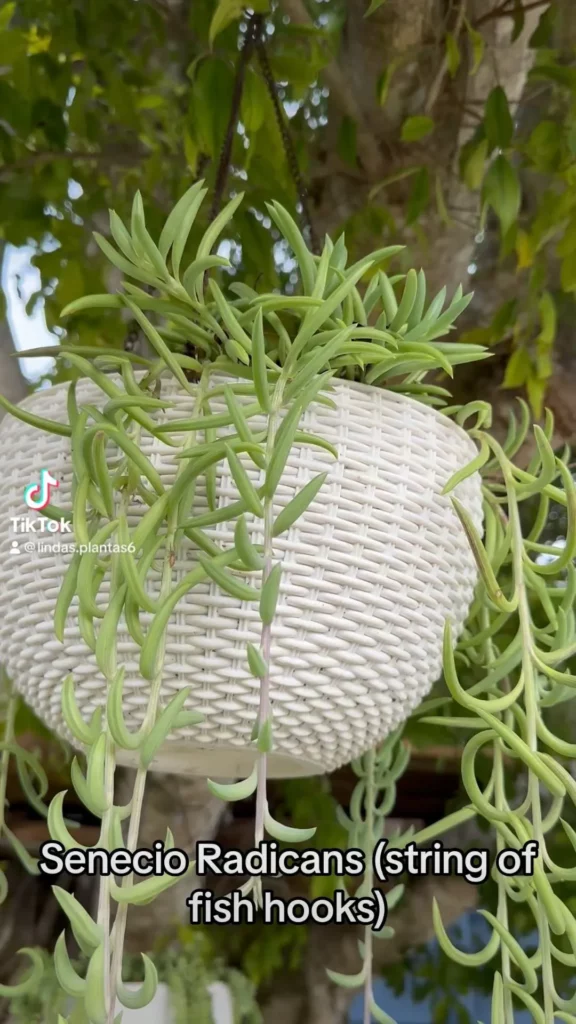
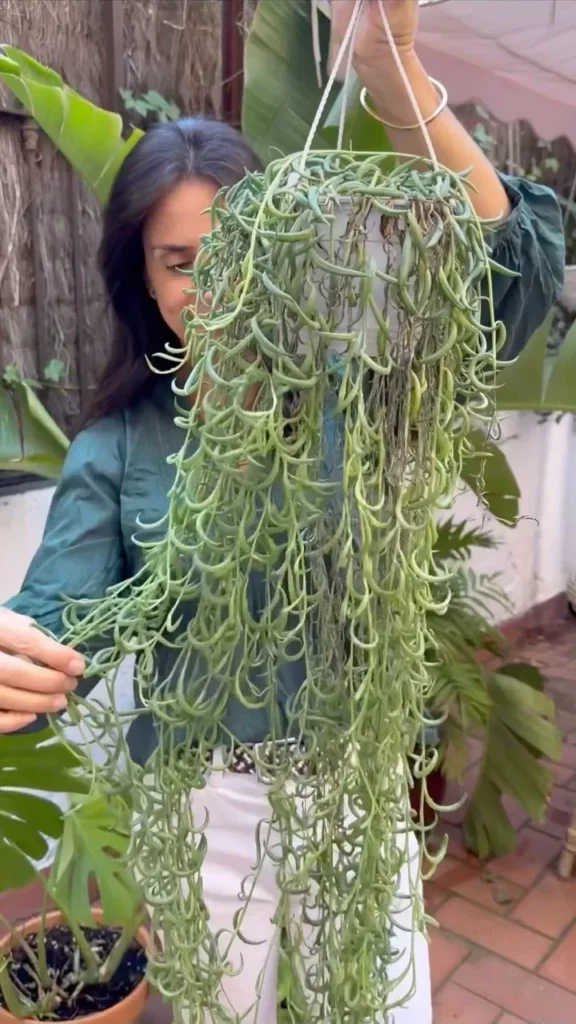
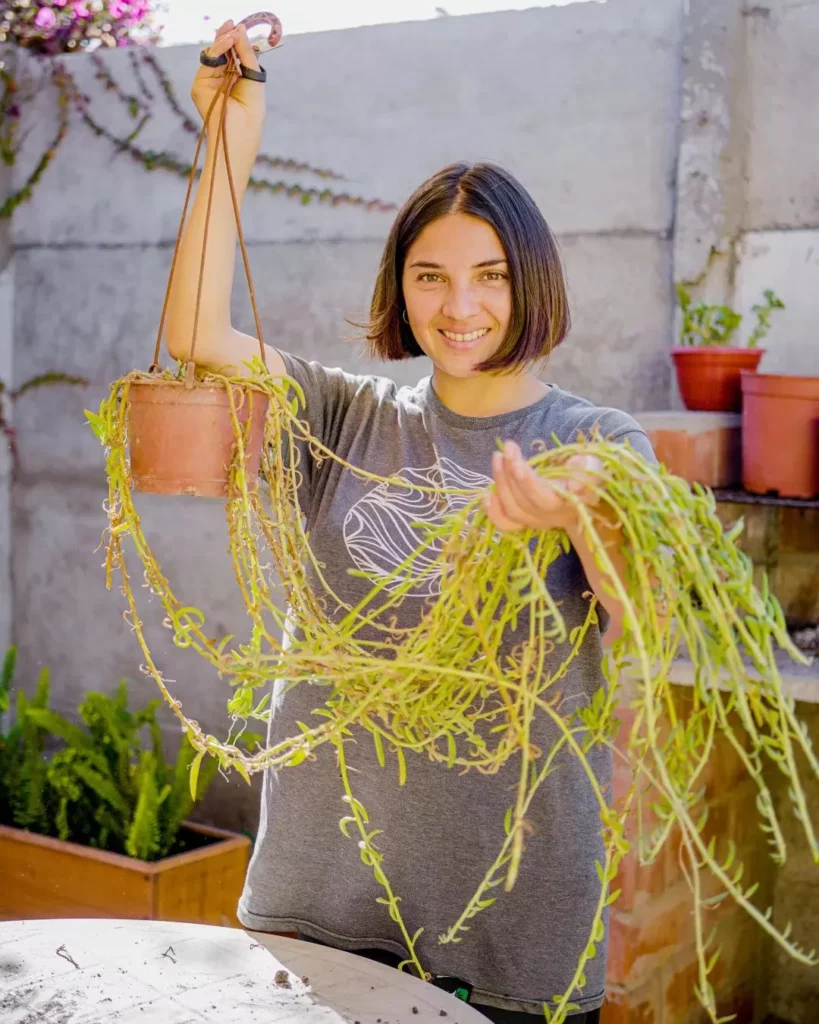
When grown indoors, the stems of the string of bananas plant can trail up to 3 feet long, creating a cascading effect that adds depth and visual interest to your decor. The elongated leaves with their distinct banana shape are sure to make a statement and catch the eye of anyone who sees them.
This succulent is native to arid subtropical regions of South Africa, where it has adapted to thrive in sandy and rocky soil. Its unique appearance and adaptability make it a popular choice for plant enthusiasts looking to add a touch of quirkiness to their indoor gardens.
Unique Features of String of Bananas
| Feature | Description |
|---|---|
| Distinctive Appearance | Cascading vines adorned with banana-shaped leaves |
| Quirky and Whimsical Look | Closely resembles the string of pearls plant |
| Trail Length | Stems can trail up to 3 feet long when grown indoors |
| Adaptability | Thrive in sandy and rocky soil |
Light Requirements for String of Bananas

For your String of Bananas plants to thrive, they require bright sunlight. In their natural habitat, these plants are accustomed to at least 6 hours of bright sun per day. When growing String of Bananas indoors, it is best to place them in a bright, sunlit area such as an east, west, or south-facing window.
The ideal light intensity for String of Bananas is between 20,000 to 50,000 lux. Lux is a measure of light intensity, with brighter light having a higher lux value. So, make sure your plant receives adequate light throughout the day to promote healthy growth.
If you have a northern exposure where sunlight might be limited, you can use supplemental plant lights to provide the necessary light requirements. This will ensure that your String of Bananas gets the light it needs to thrive even in less optimal lighting conditions.
Watering and Watering Schedule for String of Bananas


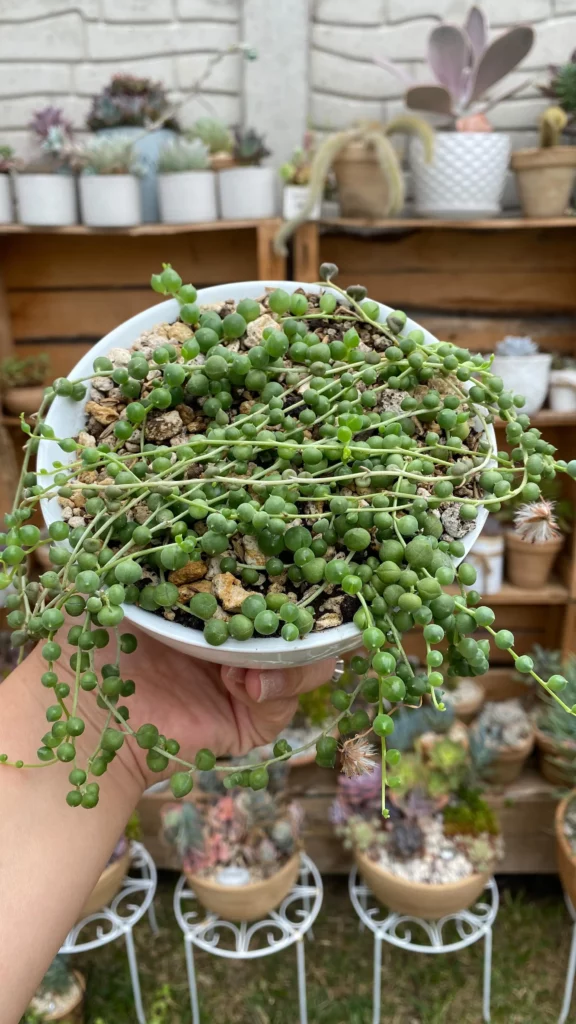
Proper watering is crucial for the health and vitality of your string of bananas plants. These succulents are adapted to dry conditions and do not require frequent watering.
To prevent overwatering and avoid root rot, it is important to wait until the soil is almost completely dry before watering your string of bananas. This allows the plant’s roots to receive adequate oxygen and prevents the soil from becoming waterlogged.
When it is time to water your string of bananas, do so thoroughly. Ensure that the water is fully absorbed by the soil, allowing excess water to drain out through the pot’s drainage holes. This helps prevent water from sitting in the saucer, which can lead to root rot.
Signs of underwatering include wrinkling leaves, indicating that the plant is thirsty and in need of water. Pay attention to these visual cues and water your string of bananas when necessary.
Fertilizing String of Bananas

String of bananas plants are relatively low-maintenance when it comes to fertilization. However, providing them with a mild organic fertilizer can give them a much-needed nutrient boost for optimal growth. To ensure the best results, it is recommended to use a fertilizer with a 3-1-2 ratio, which provides a balanced blend of nitrogen (N), phosphorus (P), and potassium (K).
When fertilizing your string of bananas, it’s important to follow a proper schedule. During the growing season, which typically starts in early spring and continues through the summer, you should fertilize your plant approximately once every two months. This regular feeding will help support healthy foliage growth and overall plant vitality.
However, it is important to exercise caution and avoid overfertilization, as it can lead to fertilizer burn and root damage. Always follow the instructions provided on the fertilizer label and use the recommended dosage for your specific plant. Remember, less is often more when it comes to fertilizing succulents like the string of bananas.
During the fall and winter, when the string of bananas is in its dormant phase, fertilization is not necessary. These plants naturally slow down their growth during this time, so providing extra nutrients would not be beneficial. Instead, focus on maintaining good watering practices and ensuring your plant receives adequate sunlight to support its natural resting period.
Potting and Repotting String of Bananas
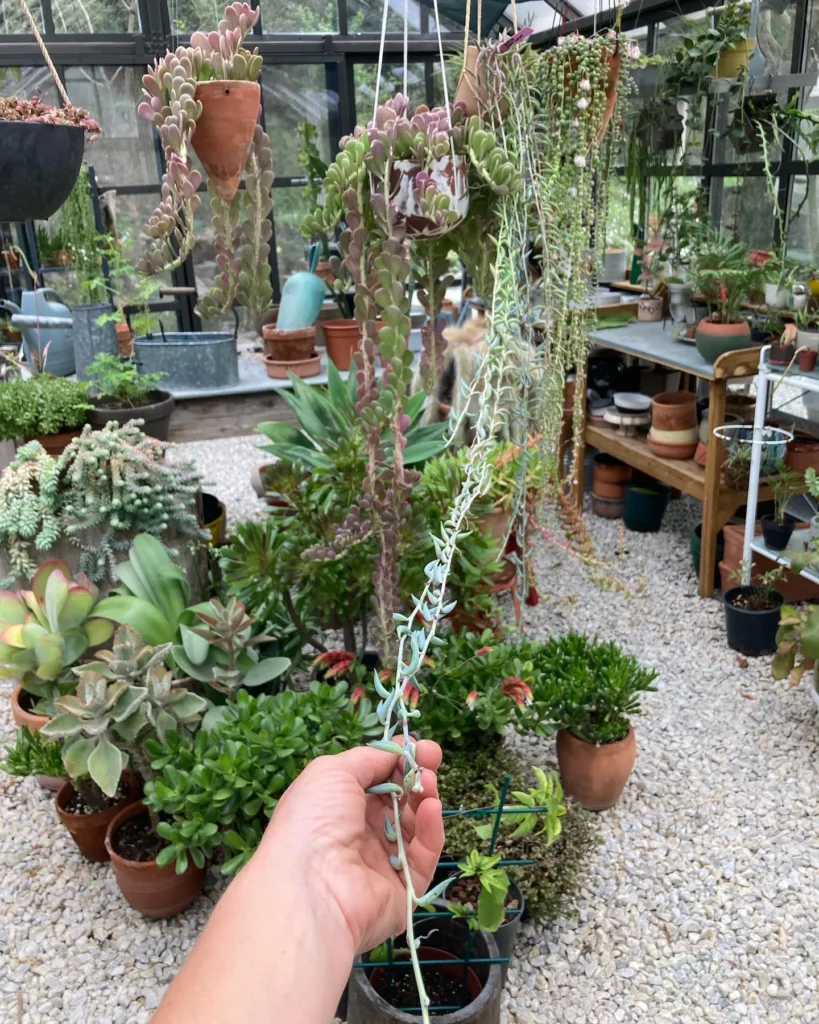
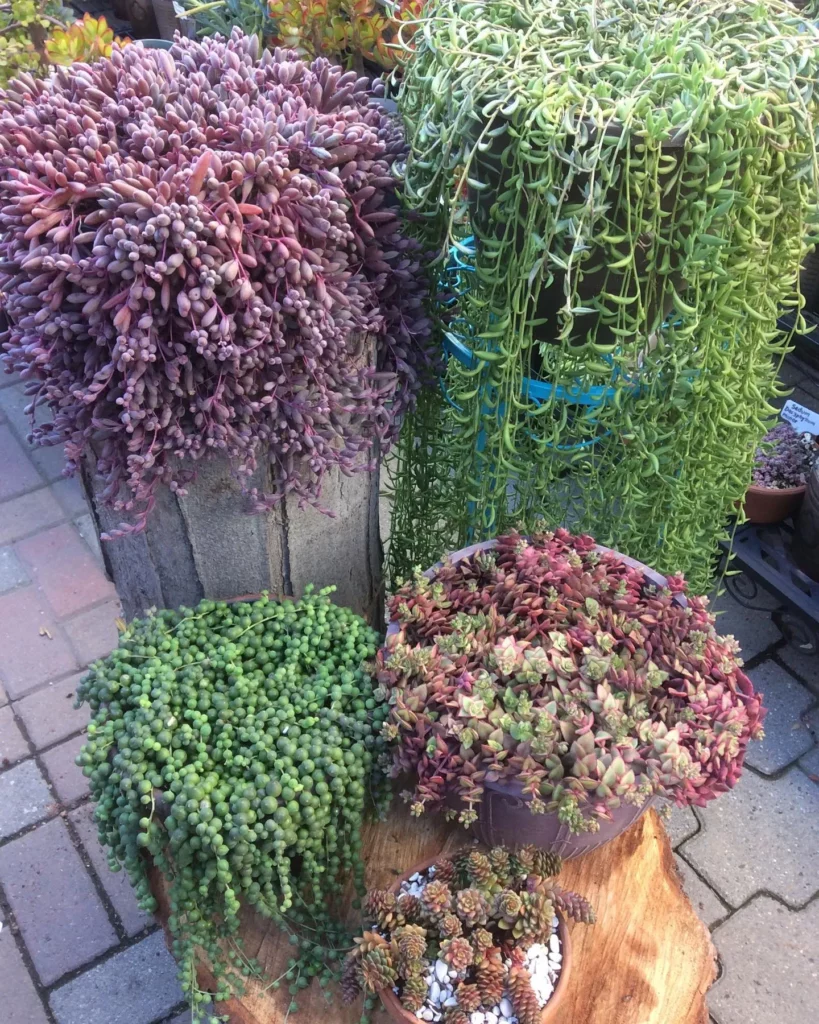
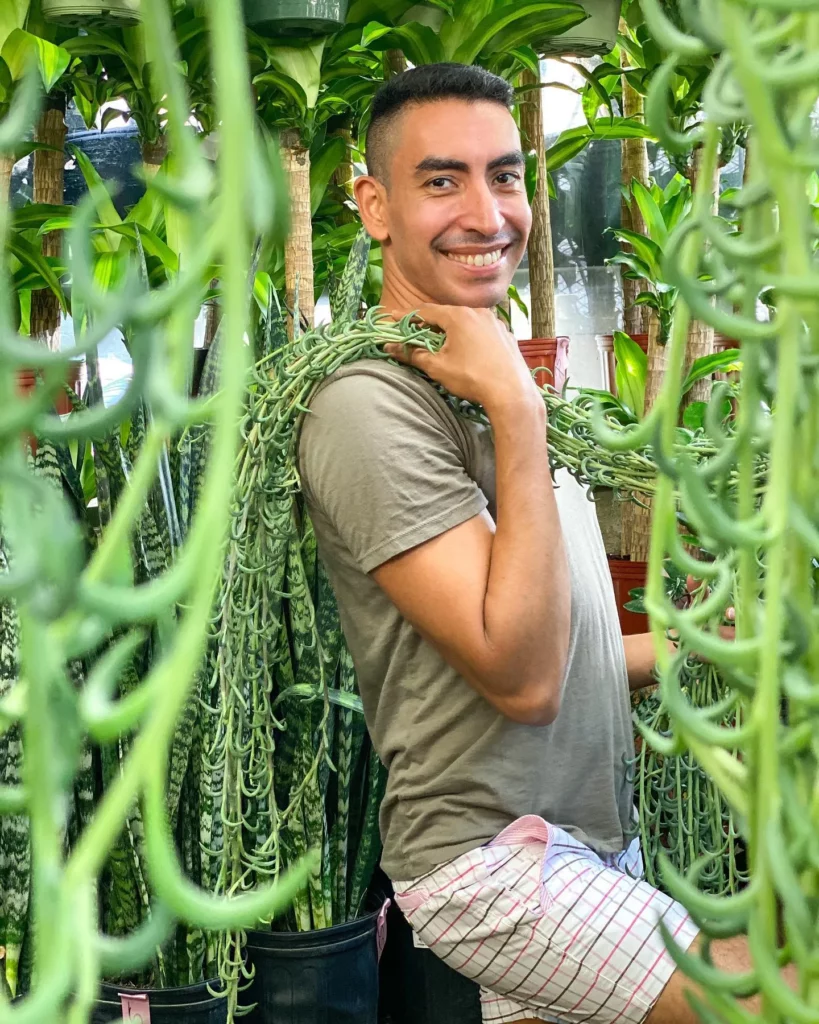
String of bananas plants are low maintenance and don’t require frequent repotting. This is because they don’t mind having their roots slightly crowded. Ideally, you should repot your string of bananas plant every 2 to 3 years to ensure its continued growth and health.
When it’s time to repot your string of bananas plant, choose a pot that is one size larger than its current pot. This will allow for some room for root expansion without overwhelming the plant. It’s also important to select a pot with good drainage holes to prevent water from pooling and causing root rot.
No products found.
Terracotta pots are widely recommended for string of bananas plants. These pots help the soil stay on the drier side, which is beneficial for succulents like the string of bananas. The porous nature of terracotta allows for better airflow and evaporation, preventing excess moisture and the risk of overwatering.
When repotting your string of bananas plant, it’s crucial to use a well-draining potting mix tailored for succulents or cacti. This type of mix ensures that excess water drains properly and prevents waterlogged soil, which can lead to root rot. Avoid using regular garden soil, as it can retain too much moisture and suffocate the plant’s roots.
| Steps for Potting and Repotting String of Bananas: |
|---|
| 1. Select a pot that is one size larger than the current pot. |
| 2. Ensure the pot has good drainage holes. |
| 3. Choose a terracotta pot to promote better airflow and drainage. |
| 4. Use a well-draining potting mix tailored for succulents or cacti. |
| 5. Gently remove the plant from its current pot, being mindful not to damage the roots. |
| 6. Place the plant in the new pot, slightly adjusting its position if necessary. |
| 7. Fill the remaining space in the pot with the potting mix, ensuring it’s evenly distributed. |
| 8. Lightly tamp down the soil around the plant to secure it in place. |
| 9. Water the plant sparingly after repotting, allowing the soil to dry slightly between waterings. |
| 10. Place the repotted plant in a bright spot with adequate sunlight. |
Propagation of String of Bananas
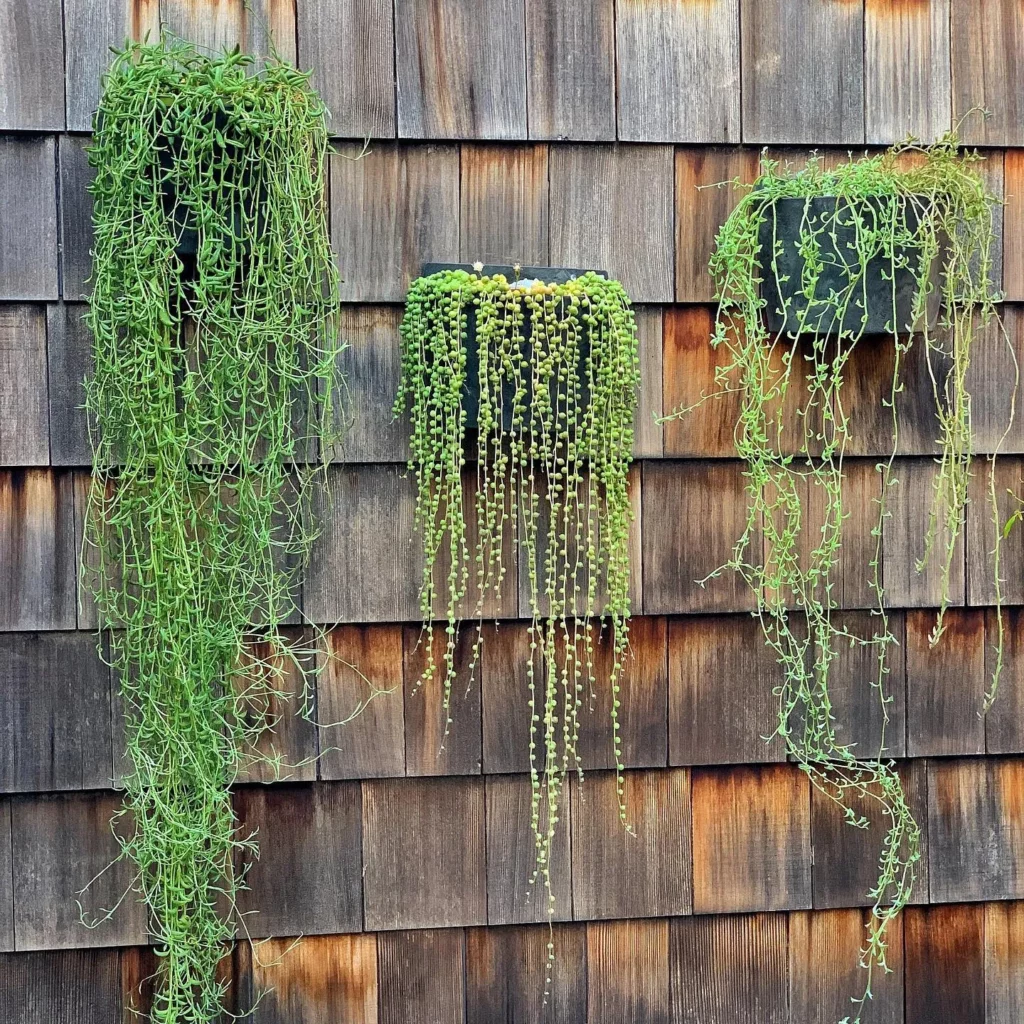
Propagating string of bananas plants is a simple and rewarding way to expand your indoor garden. There are two common methods you can use to propagate your string of bananas: rooting stem cuttings in soil and water propagation.
Rooting Stem Cuttings in Soil
The first method involves taking a long stem cutting from your string of bananas plant. Use clean, sharp scissors or pruning shears to make a clean cut just below a leaf node. The cutting should be at least a few inches long. Remove any lower leaves to expose a bare stem.
Prepare a small pot with well-draining soil. Make a small hole in the soil and gently insert the stem cutting, making sure it is securely planted. Place the pot in a bright location with indirect sunlight.
Water the cutting sparingly, keeping the soil slightly moist but not overly wet. Overwatering can lead to root rot. After a few weeks, you should start to see roots emerging from along the stem. This indicates successful propagation. As the roots develop, new trailing vines will form, creating multiple plants from a single cutting.
No products found.
Water Propagation
If you prefer water propagation, you can follow a similar process but instead of planting the cutting in soil, place it in water or moist soil until roots develop.
Take a stem cutting with several nodes and strip the lower leaves, leaving the top cluster of leaves intact. Place the cutting in a jar or vase filled with water, ensuring that the lower nodes are submerged. Alternatively, you can insert the cutting into moist soil, making sure it is in good contact with the soil.
Keep the jar or vase in a bright location with indirect sunlight. Change the water every few days to prevent stagnation. Within a few weeks, roots should start to form. Once the roots are established, you can transfer the cutting to a pot with well-draining soil or continue growing it in water.
Common Problems and Pest Control for String of Bananas
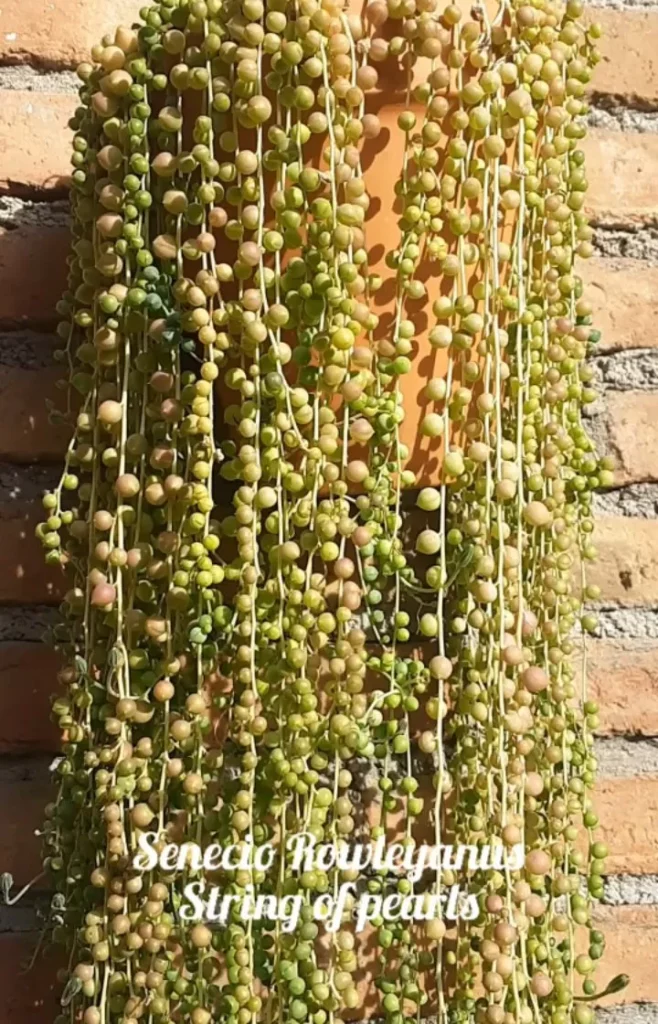

String of bananas plants are generally resilient and not prone to many pests or diseases. However, poor growing conditions can lead to problems such as pest infestation and root rot. Regularly inspecting your plant and taking proactive measures can help ensure its health and vitality.
Pests
Common pests that may affect string of bananas plants include:
- Spider Mites
- Mealybugs
- Scale Insects
These pests can cause damage to the leaves and stems of your plant. To deter and control them, it is important to regularly inspect your plant for signs of infestation. Look for tiny webs, white cottony masses, or small bumps on the plant. If you notice any of these signs, take immediate action.
No products found.
To control pests on your string of bananas plant, you can use natural remedies such as neem oil or insecticidal soap. These products are effective in deterring pests without harming the plant. Follow the instructions on the product label for proper application.
Root Rot
Root rot can occur if the plant is overwatered or if it sits in wet soil for extended periods. To prevent root rot:
- Ensure proper drainage by using a well-draining potting mix and a pot with drainage holes.
- Water the plant only when the soil is almost completely dry. Avoid overwatering.
- Allow excess water to drain out of the pot before placing it back in its saucer.
| Pest | Signs of Infestation | Control Measures |
|---|---|---|
| Spider Mites | Tiny webs on the plant, stippling on leaves | Apply neem oil or insecticidal soap |
| Mealybugs | White cottony masses on stems and leaves | Apply neem oil or insecticidal soap |
| Scale Insects | Small bumps on stems and leaves | Apply neem oil or insecticidal soap |
Temperature and Humidity Requirements for String of Bananas
String of bananas plants have specific temperature and humidity preferences that contribute to their overall health and well-being. Understanding these requirements will help you create the ideal environment for your plant to thrive.
Temperature Requirements
During the growing season, which typically spans spring and summer, string of bananas plants prefer warm temperatures ranging between 70 to 80ºF (21 to 25ºC). This temperature range mimics the warm subtropical climate of their native habitat, providing an optimal growing environment.
During the winter, when these plants are in dormancy, it is important to adjust the temperature accordingly. Lowering the temperature to 50-55ºF (10-13ºC) during the dormant period helps simulate natural seasonal changes and supports healthy growth.
While string of bananas plants can tolerate temperatures as low as 35ºF (1.5ºC), it is crucial to note that they are not frost-tolerant. Frost can cause severe damage or even kill the plant, so it is important to protect them from freezing temperatures.
Humidity Requirements
String of bananas plants prefer average room humidity levels of around 40%. This moderate humidity level helps create a suitable microclimate for the plant’s growth and ensures proper transpiration.
It is important to avoid excessive humidity, as it can lead to foliage rot and other moisture-related issues. Overwatering and inadequate air circulation can contribute to high humidity levels, so it is crucial to strike a balance to maintain healthy plant growth.
By providing the appropriate temperature and humidity conditions, you can create an environment that supports the optimal growth and well-being of your string of bananas plant.
Summary and Final Thoughts on String of Bananas Care
Growing a lush string of bananas plant indoors can be a rewarding and relatively easy experience. With the right care, these plants can thrive and add a unique greenery to your indoor space. Remember to provide bright sunlight, infrequent watering, well-draining soil, and occasional fertilization. Regularly inspect the plant for signs of pests or diseases and take appropriate measures to prevent and control them. Creating a warm and humid environment within the plant’s preferred temperature range will ensure its health and vitality. With these care guidelines, you can enjoy the beauty and quirkiness of the string of bananas plant in your indoor garden.
To summarize, caring for a string of bananas plant requires:
- Placing the plant in a bright, sunlit area, preferably near an east, west, or south-facing window.
- Watering the plant only when the soil is almost completely dry, ensuring proper drainage.
- Using a mild organic fertilizer once every 2 months during the growing season.
- Repotting the plant every 2 to 3 years in a well-draining potting mix.
- Propagating the plant through stem cuttings in soil or water.
- Regularly inspecting the plant for pests and diseases, and taking appropriate measures for control.
- Providing a warm and humid environment within the plant’s preferred temperature range.
FAQ
How do I grow a lush string of bananas indoors?
To grow a lush string of bananas indoors, you need to provide bright sunlight, infrequent watering, well-draining soil, and occasional fertilization. Additionally, make sure to prevent and control pests or diseases by regularly inspecting the plant. Creating a warm and humid environment within the plant’s preferred temperature range will ensure its health and vitality.
What are the unique features of the string of bananas plant?
The string of bananas plant has cascading vines adorned with banana-shaped leaves that create a quirky and whimsical look. Its stems can trail up to 3 feet long when grown indoors, creating a beautiful cascading effect. This succulent is native to arid subtropical regions of South Africa and has adapted to thrive in sandy and rocky soil.
What are the light requirements for string of bananas?
String of bananas plants require bright sunlight to thrive. In their natural habitat, they are accustomed to at least 6 hours of bright sun per day. Indoors, it is best to place them in a bright, sunlit area such as an east, west, or south-facing window. If you have a northern exposure, supplemental plant lights can be used to provide adequate light.
How often should I water my string of bananas plant?
String of bananas plants are adapted to dry conditions and do not require frequent watering. It is important to wait until the soil is almost completely dry before watering to avoid overwatering, which can lead to root rot. Water the plant thoroughly when watering, ensuring that the water is fully absorbed by the soil. Signs of underwatering include wrinkling leaves, indicating that the plant needs water.
How often should I fertilize my string of bananas plant?
String of bananas plants do not require frequent fertilizing, but a mild organic fertilizer can provide them with a boost. It is recommended to fertilize them once every 2 months during the growing season, starting in early spring and through the summer. However, it is important not to overfertilize, as this can damage the plant. During the fall and winter, when the plant is dormant, no fertilization is needed.
How often should I repot my string of bananas plant?
String of bananas plants do not mind having their roots slightly crowded, so repotting is only necessary every 2 to 3 years. When repotting, increase the pot size by one size and choose a pot with good drainage holes. It is important to use a well-draining potting mix tailored for succulents or cacti. Repotting should be done in early spring, just as the growing season begins.
How can I propagate my string of bananas plant?
Propagating string of bananas plants is relatively easy. The most common method is by rooting stem cuttings in soil. Another method is taking stem cuttings with several nodes, stripping the lower leaves, and allowing the cutting to dry out and callus before placing it in water or moist soil. Within a few weeks, the cuttings should develop new roots and can be planted.
What are the common problems and how can I control pests for my string of bananas plant?
String of bananas plants are generally resilient and not prone to many pests or diseases. However, poor growing conditions can lead to problems. Common pests that may affect these plants include spider mites, mealybugs, and scale insects. Regularly inspect the plant for signs of infestation and use neem oil or insecticidal soap to deter and control pests. Providing the right conditions and avoiding excessive watering can prevent most problems.
What are the temperature and humidity requirements for the string of bananas plant?
String of bananas plants prefer warm temperatures ranging between 70 to 80ºF (21 to 25ºC) during their growing season. In winter, when they are dormant, temperatures can be lowered to 50-55ºF (10-13ºC). These plants can tolerate temperatures as low as 35ºF (1.5ºC) but are not frost-tolerant. As for humidity, these plants prefer average room humidity levels around 40%. High humidity can cause foliage rot, so it is important to avoid overwatering and provide adequate air circulation.
Do you have any summary or final thoughts on the care of the string of bananas plant?
Growing a lush string of bananas plant indoors can be a rewarding and relatively easy experience. With the right care, these plants can thrive and add a unique greenery to your indoor space. Remember to provide bright sunlight, infrequent watering, well-draining soil, and occasional fertilization. Regularly inspect the plant for signs of pests or diseases and take appropriate measures to prevent and control them. Creating a warm and humid environment within the plant’s preferred temperature range will ensure its health and vitality. With these care guidelines, you can enjoy the beauty and quirkiness of the string of bananas plant in your indoor garden.




